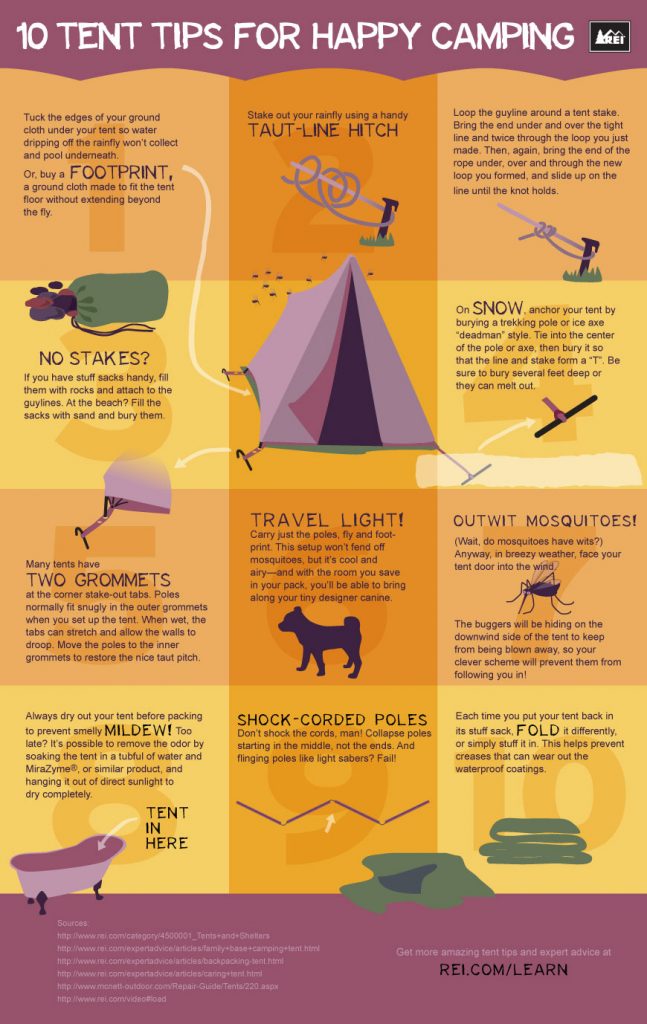The rainfall fly is an important part of your camping tent, shielding it from rain, wind and severe sunlight. Whether you pick a spacious multi-room tent or light-weight backpacking camping tent, you'll discover that a quality rainfly boosts your outside experiences.
Seek a rainfly with sturdy materials and a high water resistant score. Consider the weight and packability of a rainfly when choosing it for backpacking journeys.
Sleeping Camping tent
A rainfly offers additional protection for your tent from unexpected showers. Its design deflects rain and snow and helps prevent water from pooling on the top of your outdoor tents. This can cause the material to droop and cavern, leading to leaks.
Modern rainfly fabrics consist of polyurethane or silicone coverings to offer outstanding waterproofing. Several additionally feature secured joints to prevent water from leaking through sewing. Some also have reflective patches to aid you situate your camping tent in low-light conditions.
Pick a rainfly that shows the climate and camping problems you run into most often. For example, desert campers require a rainfall fly that blocks wind and UV rays. Backpackers must think about ultralight rainfall flies to minimize pack weight without endangering security. Try to find adjustable attachment factors that permit you to alter the tension on the fly to guarantee that it is tight and located effectively to avoid leakages. A well-positioned rainfly can also manage temperature level and decrease condensation inside the outdoor tents.
Tarp
Tarps are versatile pieces of camping gear, and a tarp sanctuary can be one of one of the most comfortable alternatives for camp. Along with having the ability to be set up in unlimited means, tarps also tend to need less gear than tents and are much lighter in weight.
A significant advantage to tarp shelters is that they permit ample ventilation. While this can be a drawback for some campers, who might prefer to have a more enclosed room, it is a crucial factor in keeping passengers from overheating and reducing the accumulation of condensation that might endanger the material.
Similar to other setups, when setting up a tarpaulin sanctuary, ensure the ridge line is established at an angle to help straight rain and snow far from the shelter. A great ridgeline can also keep wind from blowing the tarpaulin around. Ensure the tarpaulin is secured properly with proper linking techniques, such as a prusik knot (or moving knot), at elevations that create adequate head space and are not a stumbling risk, and incline the tarpaulin suitably for drainage.
Protection
A rainfly is just one of one of the most essential items of camping tools to cause any journey. It protects your outdoor tents from weather condition that can quickly alter, permitting you to remain comfy and appreciate your wilderness experiences.
Modern rainfall fly layouts offer more than simply waterproof defense. Some have integrated solar panels to help you maintain billed on the go, while others have flexible vents for air movement to camping gear mitigate condensation buildup. Selecting a rainfly that fits your needs and preferences is important for the general experience.
Try to find light-weight textiles, such as nylon or polyester, and polyurethane coverings to improve water resistance. Also consider the rainfly's head hydrostatic pressure score, which assists you evaluate its ability to hold up against rainfall and wind. Remember that rainfall flies typically need to be cleaned after each usage, considering that dust can endure the water-proof layer. It's ideal to tidy and shop it in a trendy, completely dry area to stay clear of mold and mildew and mold.
Sanctuary
A rainfly is an essential tool for your hammock, shielding you from the components and guaranteeing that you can sleep comfortably. When selecting a rainfly, consider the climate and problems in which you'll be camping. For example, tropical environments might call for a rain fly that has high moisture and UV protection. Various other considerations consist of textile type and weight. Seek options that are light-weight and made from durable products that resist abrasions and discolorations.
If you do not have a rain fly, you can develop a makeshift shelter making use of a tarp. Nonetheless, it's best to establish your rainfall security initially before setting up the remainder of your tent. This makes sure that you can quickly and quickly enter and out of your hammock in the event of an abrupt storm or adjustment in weather. Additionally, ensure that your rainfall fly is properly secured to stop flapping in the wind. Bear in mind that rainfall flies and bug webs must be cleansed frequently to prevent mud, mildew and mold and mildew from accumulating over time.
